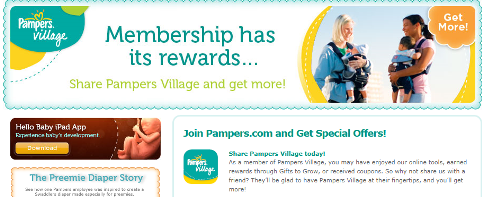 Do you have many subgroups (or tribes) your business relies on? Have you figured out how to connect with these groups?
Do you have many subgroups (or tribes) your business relies on? Have you figured out how to connect with these groups?
Some brands, like Wachovia, use a single corporate channel for all of their social media efforts. Other brands, like Kodak, created multiple corporate channels that are managed by individual business units.
Why Tribes?
As businesses look toward new opportunities to grow their presence, it may be time to reconsider your strategy about tribes and determine whether you're truly delivering “value” to your followers.
Marketing segmentation offers an interesting opportunity to continue to grow your following while delivering highly targeted content that is relevant to your most profitable customer segments.
Market segmenting is dividing the market into groups of individual markets with similar wants or needs that a company divides into distinct groups which have distinct needs, wants, behavior or which might want different products & services. ~Wikipedia.
Put simply, market segmentation is creating groups of your customers based on a criterion that signifies that they have similar interests and needs.
Visionary Seth Godin put a new spin on segmentation in his book, Tribes: We Need You To Lead Us, and shares his ideas in an extremely powerful Ted Talk.
Seth talked about tribes in terms of leadership, but there are unique opportunities to empower similar movements that already exist within our customer base using basic segmentation tactics.
Here are 7 different types of market segmentation you can use to empower your own tribe.

#1: Passions
Are there groups of your customers who share common passions?
Aligning with something your customers are already passionate about and delivering content that's specific and relevant to that theme is a great way to generate a bigger audience of others who are also passionate about the subject.
For example, Kodak could create a strategy around serving photographers specializing in nature photography.
#2: Generational Dynamics
Does your brand attract a specific generation or span across multiple generations? Each generation has specific wants, needs and value systems that make it difficult to utilize a broad approach and address. “Each generation of the US population has unique wants and needs that marketers and retailers should address differently,” according to The Nielsen Company.
Get World-Class Marketing Training — All Year Long!
Are you facing doubt, uncertainty, or overwhelm? The Social Media Marketing Society can help.
Each month, you’ll receive training from trusted marketing experts, covering everything from AI to organic social marketing. When you join, you’ll also get immediate access to:
- A library of 100+ marketing trainings
- A community of like-minded marketers
- Monthly online community meetups
- Relevant news and trends updates

#3: Life Events
Are there large groups within your customer base who have experienced specific life events that create synergy and passion around the subject? For example, you may find that your products provide a unique offering that's helpful for divorcées, cancer survivors or new parents.

Discover Proven Marketing Strategies and Tips
Want to go even deeper with your marketing? Check out the Social Media Marketing Podcast! Publishing weekly since 2012, the Social Media Marketing Podcast helps you navigate the constantly changing marketing jungle, with expert interviews from marketing pros.
But don’t let the name fool you. This show is about a lot more than just social media marketing. With over 600 episodes and millions of downloads each year, this show has been a trusted source for marketers for well over a decade.
The key to selecting a life event is to discover something that becomes part of how people will define themselves as a result of going through the experience. A passing experience won't generate the kind of following you are looking for. Think about life-changing events and how your brand can support customers at that time.
#4: Life Stage
All people go through a series of life stages as they mature, and while they are in each stage they have unique perspectives and needs based on the life events that typically occur at each life stage.
For example, newly married couples may be considering purchasing their first home, balancing work and family life and planning when they should have their first child. This is drastically different from what may be top of mind for empty-nesters, whose children have just moved out of the family home. They may be thinking about what they will do with their newfound freedom, downsizing the family home, preparing for retirement, paying for college and planning care for their aging parents. Does your brand have an opportunity to provide value to these conversations?
#5: Demographics
Another opportunity may exist within specific customer demographics. You can look at demographics such as gender, marital status, income and ethnicity to determine if there are unique needs that you can provide value around.
For example, AdAge took a look at multicultural targeting today and found that, “delivering of a message about a product or a service is best done when the advertiser understands the lens through which a consumer is viewing both the culture they're in … and how their own experiences map onto it.” Will segmenting based on demographics allow you to provide more highly relevant, targeted information to your audience?
#6: Geography
For brands that use a local or regional marketing strategy, it may be appropriate to use a similar strategy for your social media channels. This is usually important in areas where having a local presence is critical to success. Strategies can vary from moving from global to country-specific and all the way down to cities, counties and provinces. Take a look at the type of geographic targeting you are currently using and see if there is a natural fit that makes strategic sense.

#7: Product Choices
The final option is to segment based on which products a customer has shown loyalty toward. Typically, the product a customer buys tells you something about him or her and gives insight into how you can add value to his or her life. For example, Proctor and Gamble has a separate social presence for its Pampers brand where they provide customer service and games that give customers points for diaper coupons.

Before you select a target, consider whether you already have resources to support the group. If you don't, put together a list of the resources you would need.
The largest need in any niche strategy is content. It's ideal to have a blog and content calendar for the types of content you will have available that are targeted to your audience segment. If you can't create all of the content yourself, don't worry. With a few searches you can probably find third-party sources who are already writing great content that you can leverage with your outreach strategy.
What tribes exist within your customer base? How can you give them a voice? What platform can you offer them to help them spread and grow? What are you doing to connect them? Please share your thoughts and ideas in the comments section below.
Images from iStockPhoto.
Attention Agency Owners, Brand Marketers, and Consultants

Introducing the Marketing Agency Show–our newest podcast designed to explore the struggles of agency marketers.
Join show host and agency owner, Brooke Sellas, as she interviews agency marketers and digs deep into their biggest challenges. Explore topics like navigating rough economic times, leveraging AI, service diversification, client acquisition, and much more.
Just pull up your favorite podcast app, search for Marketing Agency Show and start listening. Or click the button below for more information.

